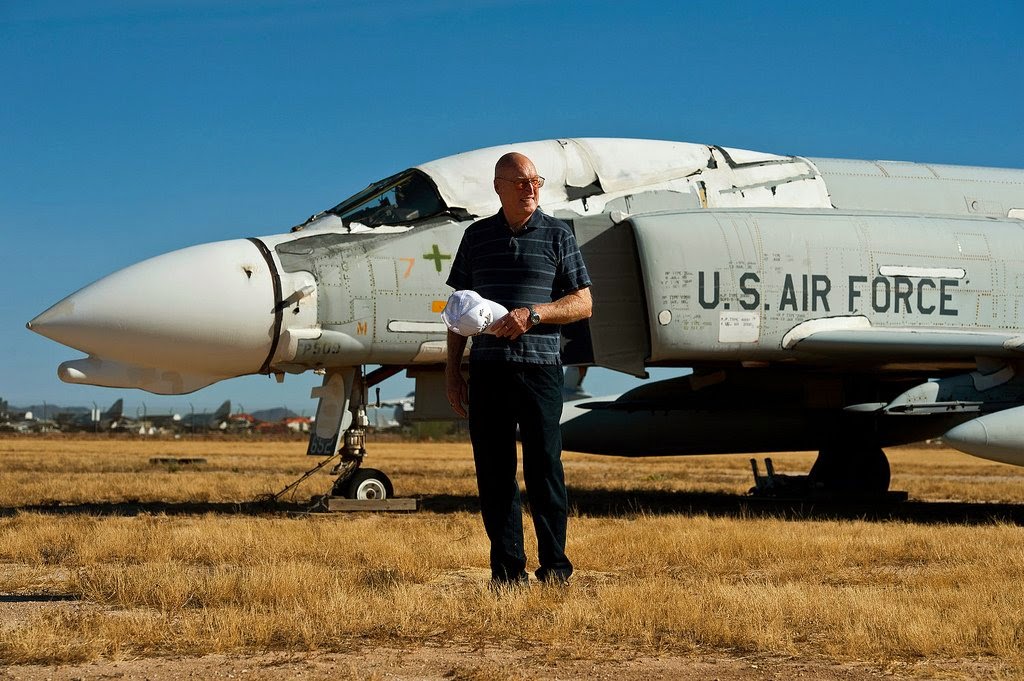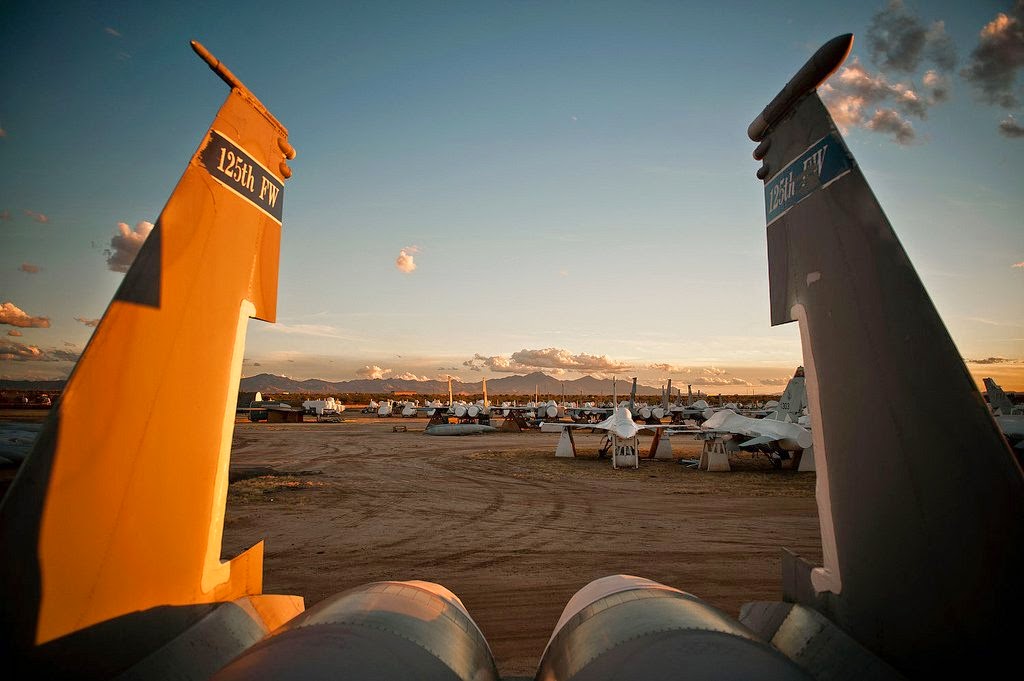THE BONEYARD: Where Air Force Birds Go To Die
Geoffrey Ingersoll
Jan. 31, 2013, 12:02 PM Air Force boneyards appeal to the child in us. The rows of rusted out
planes look like old, forgotten toys, which a child could reach out and
grab and lift into the air again.
Air Force boneyards appeal to the child in us. The rows of rusted out
planes look like old, forgotten toys, which a child could reach out and
grab and lift into the air again.The feeling is even stronger for airmen.
In an excellent article in Airman Magazine, Air Force Tech. Sgt. Matthew Bates describes retired Col. Bill Hosmer admiring a derelict F-86 Sabre:
To retired Col. Bill Hosmer, it’s still
beautiful. He walks around the old fighter and stares in admiration. He
slides a hand over the warped metal fuselage and a flood of memories
rush over him.
“I haven’t been this close to one of these in years,” he says. “Of course, that one was in a lot better shape.”
So was Hosmer. Time has weathered and
aged them both, the plane’s faded paint and creased body match Hosmer’s
own worn and wrinkled skin. Even the plane’s discarded wings stand as a
metaphor for Hosmer’s own life now – a fighter pilot who can’t fly,
standing next to a fighter jet with no wings.
Andrew Lee via U.S. Air Force
Aircraft from all military services cover the desert landscape of the 309th Aerospace Maintenance and Regeneration Group "Boneyard" at Davis-Monthan Air Force Base, Ariz.
An old, weathered flight manual sits inside the remains of a CH-3E Jolly Green Giant. After years of standing in the desert sun of the boneyard, aircraft and equipment slowly age and erode.
The Boeing YAL-1 Airborne Laser Testbed, (formerly Airborne Laser) weapons system now sits decommissioned in the boneyard. The YAL-1 was primarily designed as a missile defense system to destroy tactical ballistic missiles with an airborne laser system.

The C-141 remained in service for over 40 years until the Air Force withdrew them from service in 2006 and replaced them with the C-17 Globemaster III.
A fleet of C-5 Galaxies tower above the rest of the fighter and cargo aircraft inside the "Boneyard."
Rows of F-4 Phantoms and T-38 Talons line the grounds.
A rainbow peaks at the old unused fleet of F-4 Phantom fighters.
Retired Brig. Gen. Keith Connolly, a command pilot with more than 4,800 flying hours in F-86s, F-100s, A-7s, F-4s, F-15s and F-16s, stands before a retired F-4 Phantom.
The F-4 Phantom II has the distinction of being the last U.S. fighter flown to attain ace status in the 20th century.
The remains of a B-66 Destroyer sit palletized. The aircraft was a light bomber with the Tactical Air Command and the RB-66 models were used as the major night photo-reconnaissance aircraft for the Air Force during the 1950s.
There is little rust and metal detrioration in the arid Arizona desert, making it the perfect place for the Air Force's only aircraft "boneyard."
The Air Force "Boneyard" is at a secure location in Ariz. The facility is seldom seen by the public, outside of local bus tours and as a backdrop of Hollywood movies and television shows.
The boneyard is basically a 2,600-acre parking lot and storage facility for about 5,000 retired military aircraft.
A C-5 Galaxy, its wings stripped to the frame, is undergoing a complete tear-down of all important parts before being demolished for scrap, a process that takes nearly a year to complete.
Wings and parts are pulled from the C-5 Galaxy aircraft before the airframes are torn apart for scrap.
The rows of F-15 Strike Eagles and F-16 Fighting Falcons undergo a preservation process that allows them to be recalled into active service within 72 hours if needed.
A C-130 from the 43d Air Wing, Pope Air Force Base, N.C., peers deeper into the boneyard.
The remains of a B-66 Destroyer seen through the shattered cockpit glass of an F-86 Sabre.
The fuselage of an A-10 Thunderbolt II sits surrounded by the rest of its parts. Aircraft like this are typically used to provide parts to other A-10s still serving throughout the Air Force.
The Phantom sits, still somewhat preserved. Still visible are the influences of it's predecessor, the F-8 Crusader.
Interminable rows of dismantled KC-135 Stratotanker stretch into the desert. The Air Force still actively fields hundreds of these for refueling purposes.
A C-5 Galaxy waits to be broken down and turned into scrap metal — The 309th Aerospace Maintenance and Regeneration Group then sells the scrap metal to other customers.
High above the ground, a C-5 Galaxy aircraft sits motionless as clouds pass by. The Galaxy used to be the Air Force's premier military transport aircraft.
The B-66 Destroyer was a U.S. Air Force Tactical Air Command light bomber. The RB-66 models were used as the major night photo-reconnaissance aircraft of the USAF during the 1950s.
Cracked and rusted gauges from an old blimp show the signs of sitting unused for decades.
A UH-34D Seahorse helicopter, which began service in 1952 as a Navy anti-submarine warfare helicopter and served as the primary Marine Corps assault helicopter of the Vietnam War. This one now sits as part of the more than 4,400 deactivated aircraft.
Inside the belly of the blimp.
 A retired, rusted, faded T-38 Talon sits in pieces. The Talon was the world's first supersonic trainer.
A retired, rusted, faded T-38 Talon sits in pieces. The Talon was the world's first supersonic trainer.
The T-41 Mescalero was the military version of the popular commercial Cessna 172. Rows of them sit in the boneyard.
The "Boneyard" hosts civilian aircraft as well, like this commercial cargo plane.
If anything, the graveyard serves as a grim reminder of the necessities for military air power.































This evokes private and inward thoughts of what was, what is, and what has yet to come... and a tear or two.
ReplyDelete